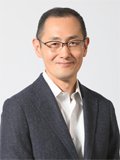致謝詞

Mr Pro-Chancellor, President, Distinguished Guests, Ladies and Gentlemen.
I must begin by thanking you for this wonderful honour. Although I am the only one standing before you, I want to stress that today you are kindly recognizing the work of a large team to whom I cannot overstate my gratitude. Our colleagues are not only dedicated and tenacious, but also exceptionally intelligent and creative. It is because I have surrounded myself with truly talented people that I am here.
I think most if not all of you have heard of iPS cells, but I nevertheless want to briefly explain what they are. iPS cells, or induced pluripotent stem cells, are cells that have been induced to a pluripotent state that resembles embryonic stem cells derived from embryos. The beauty of embryonic stem cells is that they have the potential to differentiate into any cell type, such as a heart cell, brain cell, or muscle cell. However, upon differentiation, their fate is determined forever. In other words, a muscle cell is always a muscle cell, whereas a stem cell can become any type of cell. The medical implications of embryonic stem cells are grand. The problem is we have to use human embryos to generate them.
Wouldn't it be wonderful then if we could take any cell in the body and revert it back to a stem cell? Well, this is the idea of cell reprogramming, which is almost like a fountain of youth, because we take the cell back to a previous time when it was young and full of potential. Of course, when I first entered research, cell reprogramming was not my original goal. But when is any great discovery the original goal?
The discovery of iPS cells is really just one iterative of a long list of discoveries, both large and small. These include works that both inspired me to enter the field and those that sustained my interest during it. Ones that I repeatedly note are the works of Sir John Gurdon and his work on nuclear transfer, Sir Ian Wilmut and his cloning of Dolly the sheep, and James Thomson and his generation of human embryonic stem cells. Building on these and other past discoveries, I hypothesized the factors that sustain pluripotency in a stem cell could also induce pluripotency in a differentiated cell. Surrounding myself with excellent researchers, we finally discovered that four factors are sufficient to induce the pluripotent state. This result astounded the scientific community, including ourselves. Not only was the finding revolutionary, the method proved remarkably simple for what was once considered an impossible task.
Since then, iPS cell technology has progressed with an amazing pace. You may have heard that just last month the first iPS cell transplantation was done in humans, where skin cells from a patient were reprogrammed into iPS cells and then differentiated into retinal cells. These retinal cells were then transplanted back into the patient's eyes to treat macular degeneration. This is a very exciting trial and will hopefully demonstrate the readiness of iPS cells for human care. There are a number of similar projects ongoing for intractable diseases including Parkinson's disease and heart attacks. The technology is also being used in drug discovery.
My vision is to help patients through basic medical research, which is why I am so excited about iPS cell technology. Of course, we still need to overcome many hurdles before we can bring iPS cells to patients. We have to work very hard. However, hard work does not bother me, knowing that we could help many patients. As a once failed surgeon who left clinical medicine, that my career change may save far more lives than I ever would have in the operating room gives me a humble pleasure. I take modest pride in it.
This last observation brings me to one last point. Moments like today are after a long list of failures. During my brief career as a doctor and even longer one as a researcher, there were many times when I was frustrated and nearly lost confidence. Success is always dependent on a delicate balance between knowing when and when not to give up. I have been lucky that way. The right mentors, peers, friends, and family have guided me to make the right decisions. So, as I finish with another thank you, I want to again thank all those people who contributed to this moment.
Thank you.




